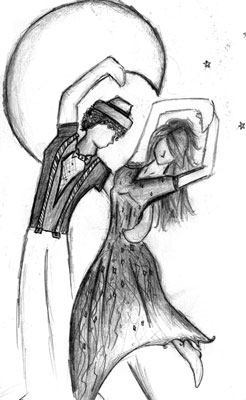All Nonfiction
- Bullying
- Books
- Academic
- Author Interviews
- Celebrity interviews
- College Articles
- College Essays
- Educator of the Year
- Heroes
- Interviews
- Memoir
- Personal Experience
- Sports
- Travel & Culture
All Opinions
- Bullying
- Current Events / Politics
- Discrimination
- Drugs / Alcohol / Smoking
- Entertainment / Celebrities
- Environment
- Love / Relationships
- Movies / Music / TV
- Pop Culture / Trends
- School / College
- Social Issues / Civics
- Spirituality / Religion
- Sports / Hobbies
All Hot Topics
- Bullying
- Community Service
- Environment
- Health
- Letters to the Editor
- Pride & Prejudice
- What Matters
- Back
Summer Guide
- Program Links
- Program Reviews
- Back
College Guide
- College Links
- College Reviews
- College Essays
- College Articles
- Back
Eating Disorders in the Ballet World
Many girls dream of becoming a ballerina and dancing with a company, but if they don't possess almost every attribute that is needed in the ballet world, they will never make it to the top.
A concern that has come up frequently in regard to the pre-professional and professional ballet dancer involves the high frequency of eating disorders among them. While ballet schools and companies have become more aware and proactive regarding these illnesses among their students/company members, there are a number of causes and affects to consider. Despite a rigorous training program and the need for proper health and nutrition, there are dancers who “starve” themselves, or who binge and purge, in order to stay as thin as possible. Why is the ballet dancer so susceptible to this?
Firstly, Ballet has been an “ephemeral” art form since its beginnings in King Louis XIV’s court, where it was born. The ballet dancer is raised up onto her toes, as though she is floating, like a weightless fairy. Her costumes accentuate her line and her movements. She is lifted high into the air, spun around and supported by her prince or her cavalier. In the studio, the ballet dancer is constantly perfecting her skill, her line, and her body. Dancers look into the mirror and scrutinize what they see for many hours in a day. Wearing form-fitting practice clothes and costumes makes the dancer hyper-conscious of her body, and any extra weight that is gained can be noticed immediately. The ballet master may tell a dancer that she needs to lose some weight. The heavier, more “athletic” dancer may not get cast in the most desirable roles. I have even witnessed the dancers who gained weight (after being encouraged to do so by teachers) being ignored in class and no longer asked to participate in special events. The dancer’s performing life is very short, so she does everything she can to optimize her chances of being cast in various roles, and of being promoted to a higher status in the school or company. With 99.9% of ballet students never making it to the professional level, it is no wonder that many young women in this arena succumb to eating disorders.
Unfortunately for many, there are very few normal body types that lend themselves to a professional career in ballet. One needs long limbs and neck, and an evenly proportioned body to be able to attain the level of flexibility, extension, and line required for many of the skills. When a body needs to balance on the inch of a point shoe toe box, that body will not be able to do this safely if it is beyond a certain size. The male dancer needs to be able to lift the female over his head. He needs to support her weight in many different ways, and he needs to be able to do this with relative ease and safety. This can only be done if the female dancer is slight enough for her male partner.
Often, it is during childhood or prepubescence that a girl becomes serious about ballet. Rigorous training often delays puberty, with its common weight gain and fuller figure development. When these changes begin to show themselves, the young woman can become frightened that she will no longer have the body that she needs to excel in her craft, so she may begin to refrain from eating in the way that she has been. Or she may eat, but then purge her meal through diuretics or vomiting, in order to keep the calories from staying with her. Even when concern is shown by directors of a school or company, and the dancer is advised to put on more weight, this can quickly tilt in the opposite direction. The dancer can then try to get “healthy”, only to gain so much weight, that there is now the concern that she is “overweight” for what is needed.
It can be a “lose-lose” situation where the healthy dancer is concerned, for those who do not have the natural body type for the art form. Starving or bingeing and purging may help a dancer to keep her weight down, but it leaves her weak and depleted, and open to a myriad of health risks. Yet, the dancer may like what she sees in the mirror, and she may also be receiving positive feedback from her teachers, directors, and partners, despite her depleted health. She is likely not aware that her bones are becoming weaker, and she is more prone to fractures. While some see teachers or directors are seen as harsh or cold when a student is advised to seek a different career path or told not to continue with ballet due to a less-than-ideal body type, it is a wonder whether they are actually doing that girl or young woman a generous favor.

Similar Articles
JOIN THE DISCUSSION
This article has 0 comments.
